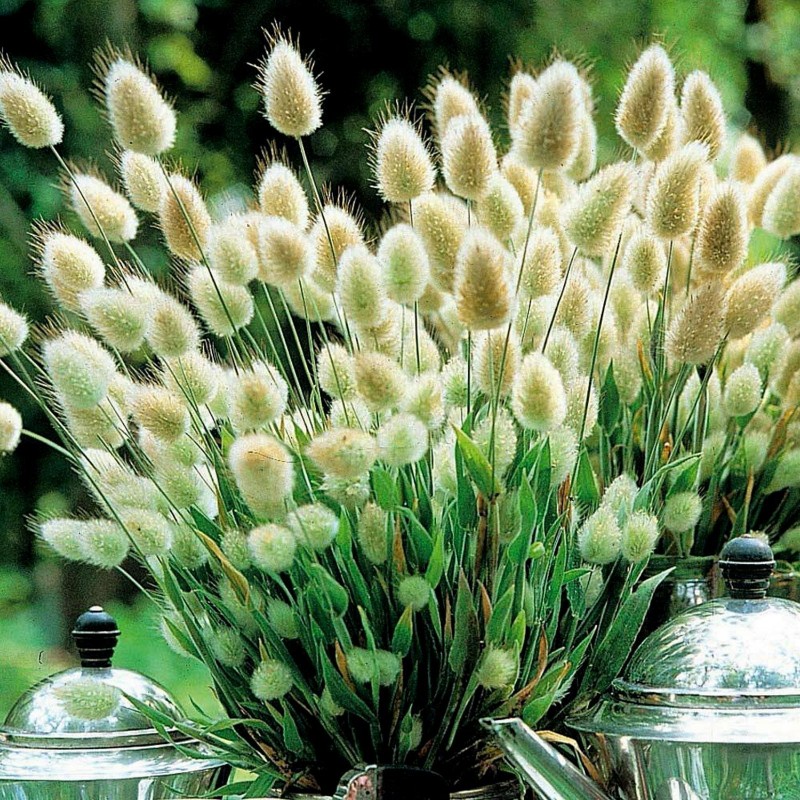








Lagurus is a genus of Old World plants in the grass family, native to the Mediterranean Basin and nearby regions, from Azores and the Canary Islands to Crimea and Saudi Arabia.
Lagurus is a genus of Old World plants in the grass family, native to the Mediterranean Basin and nearby regions, from Azores and the Canary Islands to Crimea and Saudi Arabia. It is also naturalized in Australia, New Zealand, Ireland and Great Britain, and scattered locations in the Americas. The only known species is Lagurus ovatus, commonly called hare's-tail, hare's-tail grass or bunnytail. It is also grown as an ornamental plant for its attractive flower panicles.
Lagurus ovatus is a clump-forming annual growing to 50 cm (20 in) tall by 30 cm (12 in) tall, with pale green grassy foliage and numerous short, oval green flowerheads, turning to a buff colour as they ripen, all summer long.

Native to the Mediterranean and introduced into Britain, it is now thriving on sandy stretches in the islands of Guernsey and Jersey, occasionally found in Ireland and South Wales. It has become naturalized in County Wexford, Ireland, South Devon and West Sussex.
This plant is known or likely to be susceptible to barley mild mosaic bymovirus.
Data sheet

 Reviews (0)
Reviews (0)